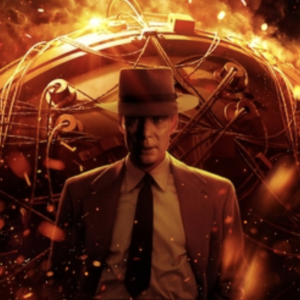I just watched the highly praised film “Oppenheimer,” which got me musing about history — my own and America’s.
The movie is a biopic about J. Robert Oppenheimer, the brilliant theoretical physicist who directed the Los Alamos Laboratory, the nucleus of the Manhattan Project, the military research program that developed the atomic bombs dropped on Hiroshima and Nagasaki, ending World War II.
By mid-1945, the United States had been at war for three-and-a-half years, enduring the draft, separation from loved ones, rationing, and mounting numbers of casualties, with no end in sight. Americans were weary.
The film reminded me of the scientific and technological miracle at Los Alamos and what did not happen.
What did happen was that on August 6, 1945, the Enola Gay, an American B-29 Superfortress bomber, dropped Little Boy, a uranium-based atomic bomb, on the Japanese city of Hiroshima. That historic act hastened the end of World War II, which concluded within a week after the August 9 detonation of Fat Man, a plutonium-based bomb, over Nagasaki.
They were the only two nuclear weapons ever used in warfare.
Although all of that occurred before I was born, I have personal connections to those events. The first is that when Little Boy was dropped on Hiroshima, my father, a staff sergeant in the U.S. Army infantry who had fought in North Africa and the Italian campaigns of World War II, was on a troopship, expecting to be deployed to the Pacific theater. (The Axis powers, led by Germany, had surrendered three months earlier.) Neither my father nor his fellow soldiers relished participating in the impending invasion of the Japanese main islands. When the Japanese surrendered on August 14, the ship headed, instead, for Virginia, where the division was disbanded. Dad headed home to Philadelphia, and I was born two years later.
So, what did not happen was Operation Downfall, the massive land invasion of Japan’s home islands that was being planned.
My second personal connection is that three physics professors had participated in the Manhattan Project three decades before I encountered them, and sometimes they related stories about the experience.
In class, one of them recalled that after the first test explosion, code-named “Trinity,” on July 16, 1945, in Alamogordo, N.M., about 200 miles southeast of Los Alamos, he was assigned to drive Army Maj. Gen. Leslie Groves, the project director, to view the result. They arrived at the site to find a crater 1,000 feet in diameter and 6 feet deep, with the desert sand inside turned by the intense heat into glass — which became known as “trinitite.” Groves’ response was, “Is that all?”
No, that wasn’t all. The blast was visible up to 160 miles away. Witnesses from Albuquerque and El Paso described a huge fireball and mushroom cloud. The radioactive fallout extended over thousands of square miles.
The first atomic bomb employed in warfare was dropped three weeks after the Trinity test.
Back to applied nuclear physics. Approximately 66,000 are thought to have died in Hiroshima from the effects of the Little Boy bomb and 39,000 in Nagasaki from the Fat Man device. In addition, there was a significant subsequent death toll from the effects of radiation and wounds.
The historical context and military realities of 1945 are often forgotten when judging whether it was “necessary” for the United States to use nuclear weapons. The Japanese had been the aggressors, launching the war with a sneak attack on Pearl Harbor in 1941 and systematically and flagrantly violating various international agreements and norms by employing biological and chemical warfare, torturing and murdering prisoners of war, and brutalizing civilians, including forcing them into prostitution and slave labor.
However, leaving aside whether our enemy “deserved” to be attacked with the most fearsome weapons ever employed, skeptics quickly overlook the “humanitarian” and strategic aspects of the decision to use them. It was predicted that literally millions of combatants and civilians on both sides would have died during the Allies’ invasion of Japan.
As President Harry Truman discovered in deciding whether to order the use of Little Boy and Fat Man, sometimes you need to choose the least bad of bad alternatives. That is why I pity the decision-makers.


